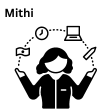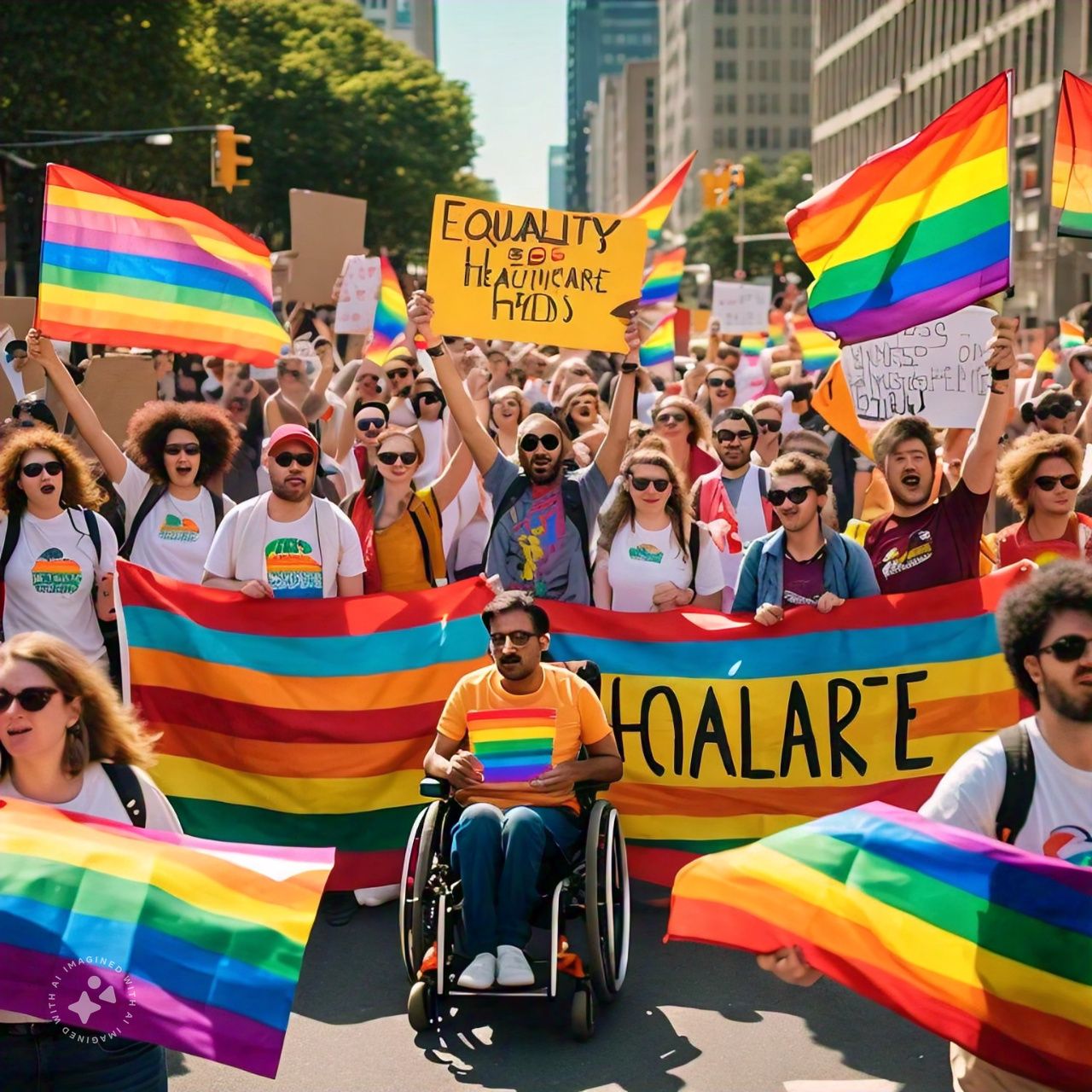Introduction
The LGBTQ+ Rights and Discrimination long-standing challenges related to rights and discrimination across various societies. Over the decades, significant strides have been made in the quest for equality and acceptance; however, discrimination still exists, manifesting in many forms, from legal inequalities to social stigma. This article delves into the history of LGBTQ+ rights, explores current issues and discrimination faced by the community, and highlights the ongoing efforts for progress and equality.
A Brief History of LGBTQ+ Rights
Early Movements
The fight for LGBTQ+ rights can be traced back to the early 20th century, when individuals began organizing against discriminatory laws and societal norms. In the 1920s and 1930s, groups like the Mattachine Society and Daughters of Bilitis emerged, advocating for the rights of gay men and lesbians, respectively. These early activists faced severe backlash, often being labeled as deviants and facing harassment from law enforcement.
The Stonewall Riots
A turning point in the LGBTQ+ rights movement occurred in June 1969 during the Stonewall Riots in New York City. After years of police harassment, the LGBTQ+ community fought back against a police raid at the Stonewall Inn, a popular gay bar. This event is widely considered the catalyst for the modern LGBTQ+ rights movement, leading to increased visibility and activism.
Legislative Milestones
In the decades that followed, numerous milestones marked the progress of LGBTQ+ rights. The American Psychiatric Association declassified homosexuality as a mental disorder in 1973, and in 2003, the U.S. Supreme Court ruled in Lawrence v. Texas that laws criminalizing homosexual conduct were unconstitutional. These legal victories paved the way for further advancements, including the legalization of same-sex marriage in several countries.
Global Perspectives
While many Western nations have made substantial progress, the struggle for LGBTQ+ rights continues in various parts of the world. Countries like Saudi Arabia and Uganda enforce severe penalties for homosexual acts, including imprisonment and, in some cases, the death penalty. The international community has increasingly recognized the need to advocate for LGBTQ+ rights globally, with organizations working tirelessly to support activists and promote change.
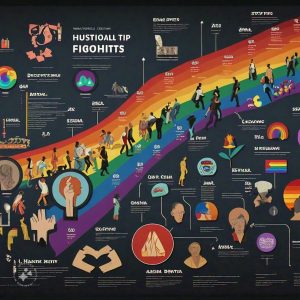
Current Issues Facing the LGBTQ+ Community
Legal Discrimination
Despite significant progress, legal discrimination remains a pressing issue. In many countries, LGBTQ+ individuals lack basic legal protections against discrimination in employment, housing, and public accommodations. For instance, in the United States, while the Supreme Court ruled that discrimination based on sexual orientation is illegal, many states still lack comprehensive laws protecting LGBTQ+ individuals from discrimination.
Healthcare Disparities
Access to healthcare is another critical issue facing the LGBTQ+ community. Discrimination within the healthcare system can lead to inadequate treatment and disparities in health outcomes. Many LGBTQ+ individuals report experiences of discrimination by healthcare providers, which can deter them from seeking necessary medical care. Additionally, transgender individuals often face obstacles related to transitioning, including limited access to hormone therapy and gender-affirming surgeries.
Mental Health Challenges
The stigma and discrimination faced by LGBTQ+ individuals contribute to higher rates of mental health issues, including anxiety, depression, and suicide. According to studies, LGBTQ+ youth are significantly more likely to experience suicidal ideation compared to their heterosexual peers. Mental health resources specifically tailored to the needs of LGBTQ+ individuals are crucial in addressing these disparities.
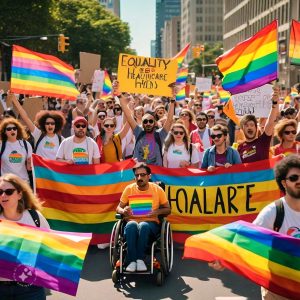
Discrimination in Society
Social Stigma
Discrimination against LGBTQ+ individuals often stems from social stigma and deeply rooted biases. Many people still hold prejudiced views, which can lead to ostracization, bullying, and violence against LGBTQ+ individuals. This stigma can have severe consequences, leading to isolation and mental health struggles for those who identify as LGBTQ+.
Workplace Discrimination
Despite legal protections in some areas, workplace discrimination remains prevalent. Many LGBTQ+ individuals report facing harassment, bias, or exclusion in their work environments. This discrimination can hinder career advancement and lead to job loss, further perpetuating economic disparities within the community.
Hate Crimes
Violence against LGBTQ+ individuals, particularly against transgender women of color, has reached alarming levels. Hate crimes motivated by sexual orientation or gender identity are still prevalent in many societies. These crimes not only affect the victims but also instill fear within the broader LGBTQ+ community, impacting their sense of safety and belonging.
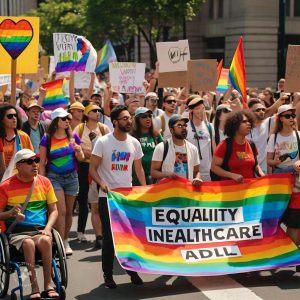
Intersectionality and Its Impact
Understanding Intersectionality
The concept of intersectionality is crucial in understanding how different aspects of identity—such as race, gender, socioeconomic status, and sexual orientation—interact to create unique experiences of discrimination and privilege. LGBTQ+ individuals who are also members of marginalized racial or ethnic groups often face compounded discrimination, making it essential for advocacy efforts to address these intersectional issues.
The Need for Inclusive Advocacy
Advocacy efforts must prioritize inclusivity and recognize the diverse experiences within the LGBTQ+ community. This includes addressing the specific needs of LGBTQ+ people of color, transgender individuals, and those from lower socioeconomic backgrounds. By fostering inclusive spaces and dialogues, advocacy groups can better serve the community and promote meaningful change.
Efforts for Change and Progress
Activism and Advocacy
Grassroots activism continues to play a vital role in advocating for LGBTQ+ rights. Organizations such as the Human Rights Campaign, GLAAD, and the Trevor Project work tirelessly to raise awareness, provide resources, and lobby for policy changes at local, national, and international levels. Activism also encompasses cultural expression, with LGBTQ+ artists and creators using their platforms to highlight issues and inspire change.
Education and Awareness
Education is a powerful tool in combating discrimination and fostering acceptance. Initiatives aimed at educating individuals about LGBTQ+ issues in schools, workplaces, and communities can help reduce stigma and promote understanding. Comprehensive sex education that includes LGBTQ+ perspectives is essential for fostering inclusivity and acceptance among younger generations.
Policy Changes
Ongoing advocacy efforts aim to enact comprehensive legislation that protects the rights of LGBTQ+ individuals. This includes pushing for non-discrimination laws, healthcare access, and the rights of transgender individuals. By mobilizing communities and engaging policymakers, advocates strive to create a more equitable society.
Conclusion
The journey toward equality for the LGBTQ+ community is ongoing, marked by both progress and setbacks. While significant strides have been made, discrimination remains a harsh reality for many. By understanding the history of LGBTQ+ rights, recognizing current issues, and supporting advocacy efforts, individuals can contribute to creating a more inclusive and equitable society. It is imperative that we continue to amplify the voices of marginalized communities and strive for a world where everyone, regardless of their sexual orientation or gender identity, is treated with dignity and respect.
